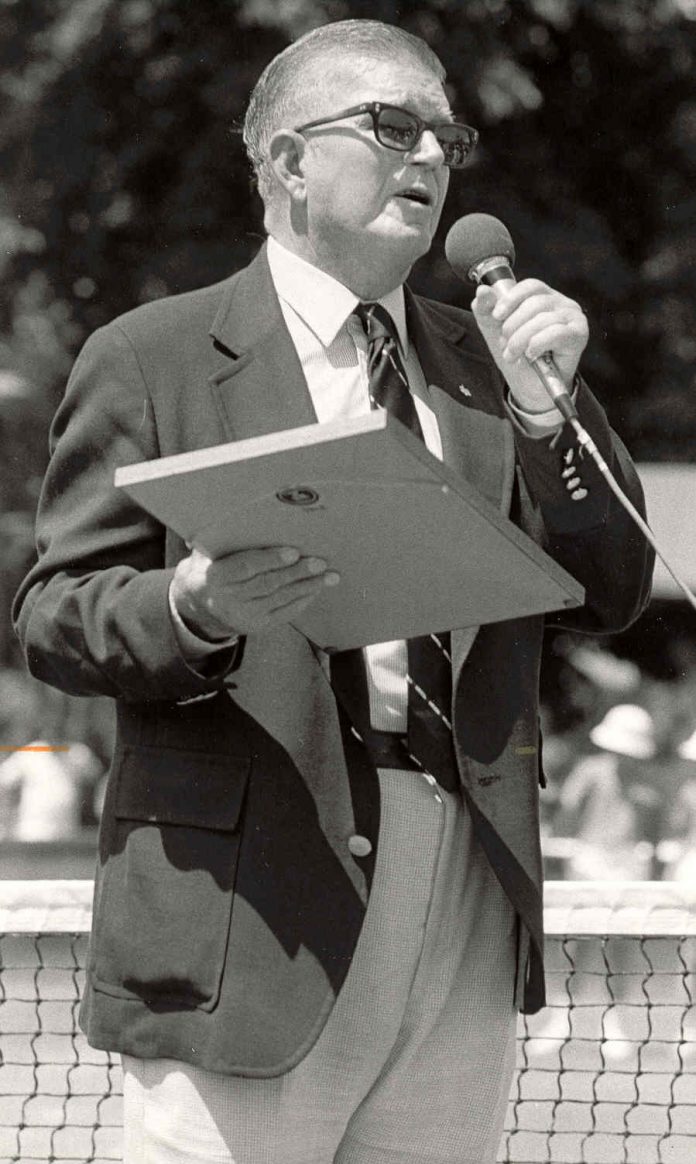
Bill Simons
The USTA is everywhere in American tennis. But until now there was no quality, in-depth history of the group that so adeptly shaped the US game.
Well, enter former Rutgers professor and USTA board member Warren Kimball, who has written a comprehensive 406-page history, “The United States Tennis Association: Raising the Game.” An expert on diplomacy, Kimball is known for his book “Forged in War: Roosevelt, Churchill and the Second World War.” In his new volume we learn how the USTA was forged – not so much on tennis courts, but in board gatherings and annual meetings, in countless governance and nominating committees, and in backroom chats. Here, we learn of the visions, fears and foibles of many powerful characters – oilmen, insurance moguls, lawyers and the like – who led the way.
In the book, which includes 149 pages of deep-dive notes and indexes, we see the work of a man who loves history. Kimball whimsically suggests that the Greek god Apollo might have been the first tennis player ever, and that, like Winston Churchill, the singular USTA President Slew Hester seemed “undressed without a cigar.” We get other quirky revelations – for example, the USTA spent $200,000 to clean up after pigeons at the Singer Bowl before it was transformed into Louis Armstrong Stadium.
Kimball loves all things political. He notes that in the 1920s a steady array of the covers of the American Lawn Tennis magazine featured association leaders with Washington hot shots. His book references bigwigs from Henry VIII, the English King, to Warren Harding, the American president. He writes of two mayors, Yankee fan Rudy Giuliani, who hates tennis, and tennis fan David Dinkins, who hated jets flying over the US Open and did something about it.
More than this, we learn of the 19th century origins of a federation created in an era that more or less accepted “class distinction as a justification for pure amateurism.” In 1889, observer Joseph Clark noted, “A complacent and confident Eastern seaboard upper class [was] universally recognized as the supreme…authority in all tennis matters in this country.” Kimball can be blunt. “Put in raw economic terms,” he notes, “the rich could play tennis full-time, the poor could not.” So-called “beneficiaries” – wealthy men of leisure – defined the game: the nature of the ball, the height of the net, the basics of umpiring and just who could play in the national championships.
Published by the University of Nebraska Press, “Raising the Game” makes clear that while the USTA is a mighty 21st-century juggernaut, it still has governance traditions that are rooted in the 19th century. Kimball recalls how a group of 31 clubs was represented at a fateful 1881 founding meeting at New York’s Fifth Avenue Hotel. From there, he shares tales of a small group of leaders called the Harvard Group, an assistant war minister who headed the USTA and encouraged play in public parks, and USTA President and Executive Director Holcombe Ward, who long ruled with a firm hand.
The book details the growth of the USTA from a tiny cadre of leafy northeastern clubs to a truly extraordinary national federation with a stunning complex in Queens, a breathtaking national campus in Lake Nona, a tidy $300 million a year revenue stream, an often forward-leaning and remarkably inclusive mindset, and as many traditions, bylaws, rivalries, spats, factions, trophies, awards, committees and sub-committees as you would expect for a vastly successful ruling body of an American sport that has both an arcane scoring system, a hefty affinity for internecine battles, and an extraordinary New York tournament.
Kimball traces how time and again familiar traditions vied with “a change is gonna come” ideas. So, we get an array of war stories about the group’s ample battles:
• Adamant advocates of old school amateurism vs. pros, who some actually said were greedy vultures out to get our children
• Officials vs. free-thinking players such as Bill Tilden, Jack Kramer, Billie Jean King and Jimmy Connors
• Powerful men vs. “uppity” women, who were unable to serve as president for 118 years and whose efforts to create their own circuit were bluntly rejected
• Whites, whom Alice Marble accused of being sanctimonious hypocrites, vs. blacks, whose efforts to play and serve were long deflected
• Easterners vs. Western wannabes
• No-nonsense staffers vs. deeply invested volunteers, and the 17 regional sections with their own agendas
Kimball tells us how league tennis became a mainstay; how once-chaotic rankings were computerized, how officiating was “professionalized” and the organization grew into an astounding, cutting-edge force. And readers will see that the USTA itself – which began with droopy nets, quirky balls and bumpy lawns – has survived many a bump in the road and now actually has its own impressive 406-page history, which provides delicious tennis czars and zealots, cigars and Chardonnay, conflicts and camaraderie, and the passionate, sometimes imperfect people who raised a great game.


















